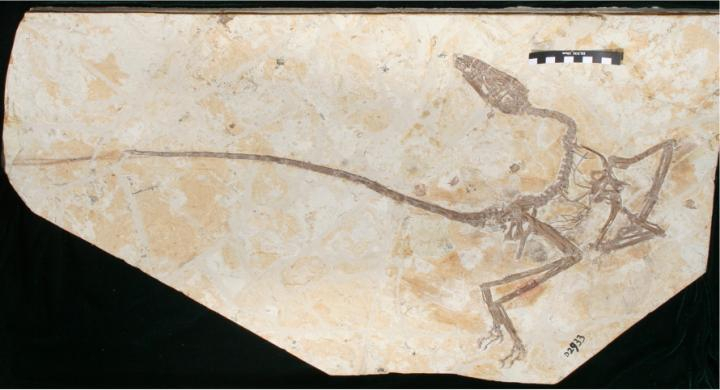A group of Chinese and American researchers found a huge cache of 200 fossilized eggs belonging to an entirely new species of feathered dinosaur in China. The giant predators, believed to have been wiped out in an asteroid impact almost 66 million years ago, still provide a peak into the weather conditions of the ancient period and how the animals evolved over a period of time.
The study of these 200 fossilized eggs of Pterosaurs in China has thrown light on the habits of the prehistoric flying reptiles which roamed around during the same time the dinosaurs thrived from the late Triassic period to the end of the Cretaceous period. The palaeontologists believe that this specimen from China offers a window into what the earth was like 120 million years ago.
In the study, which was published in the journal Anatomical Record, the researchers stated that the fossil preserves feathers and bones that provide new insights into the details as to how these dinosaurs grew and how they differed from birds.
The Chinese dinosaur
Dr Ashley Poust has analyzed the fossil while he was a student at Montana State University and during his time as a PhD student at the University of California, Berkeley. He stated that this new dinosaur species would "fit in with incredible radiation of feathered, winged animals that are closely related to the origin of birds."
In addition, the researcher mentioned that this research has revealed surprising facts such as "important bird characteristics, including flight, in the distant past." However, this dinosaur species was named as Wulong bohaiensis, in Chinese, Wulong means "the dancing dragon."

The discovery in China
Almost a decade ago when the specimen was found in China's fossil-rich Jehol Province, the remains of the ancient predator were analyzed by Poust and his advisor Dr David Varricchio from Montana State University. The animal was larger than a common crow and smaller than a raven but had a long, bony tail which would have doubled its length.
They also mentioned that the dinosaur, Wulong bohaiensis had a narrow face filled with sharp teeth, thin and small bones. The animal was believed to have been covered with feathers, including a wing-like array on both its arms and legs and two long plumes at the end of its tail.
Wulong bohaiensis
It should be noted that the ancient animal was one of the earliest relatives of Velociraptor which lived approximately 75 million years ago. Earlier scientists discovered a forelimb fossil in Mongolia which showed quill knobs like those found in many modern birds.
As per some recent studies, the ancient animal highlights many similarities between dinosaurs and birds, which go far beyond the skin-deep appearance of feathers. It should be known that like modern birds, the Velociraptor had hollow bones, tended nests of eggs and probably a similar behaviour.
The newly discovered Wulong bohaiensis also showed similarities between the dinosaurs and the birds. The analysis of the bones showed that it was was a juvenile which suggests that some dinosaurs were having mature looking feathers well before they were into adulthood.

In addition, Poust stated that "Either the young dinosaurs needed these tail feathers for some function we don't know about, or they were growing their feathers really differently from most living birds."
The second dinosaur
Scientists analyzed the sample of a second dinosaur, Sinornithosaurus. They found that this second animal had a large and adult looking bones and the researchers thought that "It was going to be mature, but histology proved that idea wrong. It was older than Wulong, but seems to have been still growing."
However, the researchers believe that until they learn more about the species, the histology is really the most dependable way to determine whether the specimen was an adult or not. In this case, Poust added that since it is about an animal which lived twice as long ago as T. rex, it's pretty amazing how well preserved they are.









